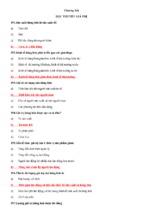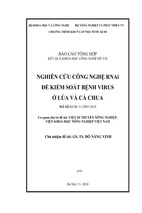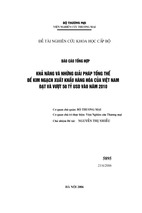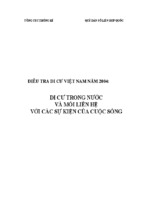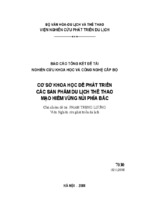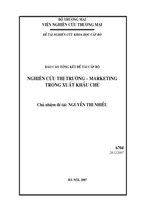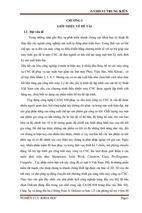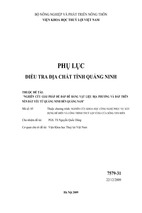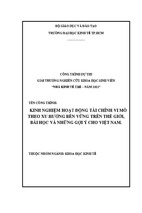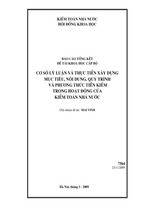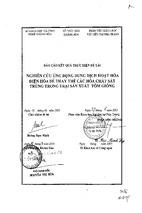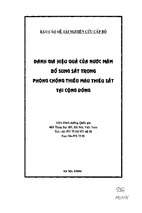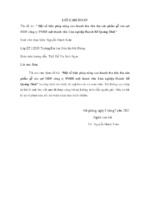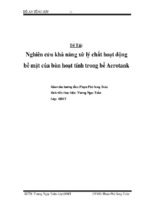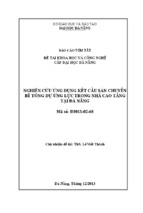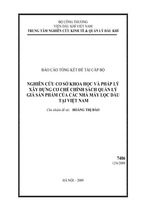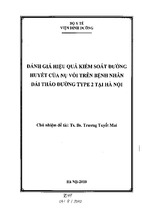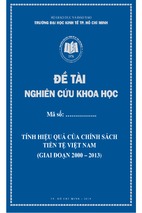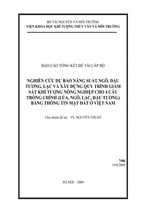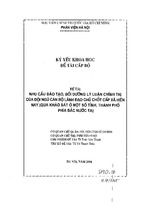A Dissertation
entitled
The Effects of an OpenNI / Kinect-Based Biofeedback Intervention on
Kinematics at the Knee During Drop Vertical Jump Landings:
Implications for Reducing Neuromuscular Predisposition to
Non-Contact ACL Injury Risk in the Young Female Athlete
by
Edward Nyman, Jr.
Submitted to the Graduate Faculty as partial fulfillment of the requirements for the
Doctor of Philosophy Degree in Exercise Science
Dr. Barry W. Scheuermann, Committee Chair
Dr. Charles W. Armstrong, Committee Member
Dr. Martin Rice, Committee Member
Dr. Vijay Goel, Committee Member
Dr. Patricia R. Komuniecki, Dean
College of Graduate Studies
The University of Toledo
December 2013
Copyright 2013, Edward Nyman, Jr.
This document is copyrighted material. Under copyright law, no parts of this
document may be reproduced without the expressed permission of the author.
An Abstract of
The Effects of an OpenNI / Kinect-Based Biofeedback Intervention on
Kinematics at the Knee During Drop Vertical Jump Landings:
Implications for Reducing Neuromuscular Predisposition to
Non-Contact ACL Injury Risk in the Young Female Athlete
by
Edward Nyman, Jr.
Submitted to the Graduate Faculty as partial fulfillment of the requirements for the
Doctor of Philosophy Degree in Exercise Science
The University of Toledo
December 2013
Introduction: The purpose of this study was to design and evaluate the validity and
effectiveness of a prototype real-time Kinect-based biofeedback and screening system
(KBBFSS) during drop vertical jump (DVJ) ACL injury prevention training in young
female athletes. We hypothesized that KBBFSS would be both valid and reliable as
compared with traditional MOCAP, and that a four-week intervention using KBBFSS
would be effective at improving landing kinematics. Methodology: 24 female gymnasts
were randomized into control (CTRL) or Kinect-based biofeedback (KBF) groups. Eight
of the subjects were additionally randomized into a validation subset. Subjects were
grouped as “high risk” or “normal risk” using a novel risk stratification algorithm.
Custom KBBFSS software afforded on-screen representation of limb and joint segments
responding intuitively and immediately to subject movement. Subjects performed twenty
30cm drop landings three days per week for four weeks, wherein KBF subjects used the
KBBFSS to augment landing mechanics, while CTRL subjects did so without KBBFSS.
Alpha-level was set a priori at p≤0.05.
iii
Results: KBBFSS results were valid for pre (r=0.963) and post (r=0.897) knee flexion,
and pre (r=0.815) and post (r=0.916) knee separation distance as compared with
MOCAP.
Knee flexion change score was statistically different between groups
(p=0.001) and effect size was large (d= 1.618), power of 0.93. Knee separation distance
change score was statistically different (p=0.024) between groups, with moderate effect
size (d=0.99) and power of 0.73. KBF group reduced peak vGRF more than controls,
with large effect size (d=1.84). KBF decreased peak bilateral frontal plane valgus knee
moment more than controls, with moderate effect size (d=0.44). Correlations between
pre-training RQS and changes in knee flexion and separation distance for “high risk”
subjects were moderate. Conclusion: KBBFSS kinematic values are valid and KBF
intervention significantly improved non-contact ACL injury risk knee kinematics. The
RQS algorithm moderately predicted outcome measures, supporting previously
established postulations that individuals who are at greatest functional risk of non-contact
ACL injury stand to gain the greatest benefit from intervention. Though further research
is warranted, in particular longitudinally, this new clinically-deployable tool may be
effective in combating non-contact ACL injury in female adolescent athletes.
iv
For Jack and Claire. May your thirst for knowledge never be satisfied and your academic
pursuits know no limits.
Acknowledgements
Though it is difficult to thank everyone who contributed to my academic journey
in just one page, there are a few who I wish to thank here. First, to my advisors here at
the University of Toledo: Dr. Charles W. Armstrong and Dr. Barry Scheuermann.
Without the guidance and support each of you has provided, I would not likely have
reached this milestone. Your leadership and poise under pressure have prepared me well
for this process and for future success in academia, in the professional world, and
personally as well.
Thank you to Dr. Martin Rice and Dr. Vijay Goel for their keen intellectual
contributions to this dissertation. Next, thank you to my classmates and colleagues: It
has been a pleasure growing and learning alongside so many bright minds. Special
thanks to Anu and Jake, as well as long-time office-mates, Rachael and Evan: I wish you
all the very best.
Thank you to all of my family and friends, without whom my dream of higher
academic pursuits could not have come to fruition. To my parents and brother: Thank
you for a lifetime of support. To Roger, Cathy, and Lori: Thank you for all of the extra
hours of support, care, and words of encouragement when there were not enough hours in
the day. Finally, and most importantly, to my wife, Amy: Thank you will never be
enough! You are my inspiration and my north star.
v
Table of Contents
Abstract
iii
Acknowledgements
v
Table of Contents
vi
List of Tables
x
List of Figures
xii
List of Abbreviations
xiv
1 Introduction
1
1.1 Epidemiology of ACL Injury ………………………………………………...1
1.2 Structure and Function of the ACL….………..…………………………........3
1.3 Mechanisms of Non-Contact ACL Injury……………………………….……4
1.4 Statement of the Problem………………………………………………….….8
1.5 Statement of the Purpose………………………………………………….…..9
1.6 Research Hypotheses…………………………………………………………9
1.7 Variables………………………………………………………………….…10
vi
2
Literature Review
11
2.1 Introduction………………………………………………………………….11
2.2 Anatomical Predisposition………………………………………………..…12
2.3 Hormonal Contributions……………………………………………………..16
2.4 Muscular Strength and Muscular Recruitment…………….………………..19
2.5 Proprioceptive Modulation and Neuromuscular Influences………………...23
2.6 Kinematics and Associated Dynamic Valgus……….………………………28
2.7 OpenNI and Kinect-Based Skeletal Tracking for Biofeedback……….…….33
2.8 Summary of the Literature Reviewed…………………………………….…34
2.9 Clinical Relevance…………………………………………………………..35
3
Methodology
37
3.1 Overview of Study Design…………………………………………………..37
3.2 Subjects……………………………………………………………………...37
3.3 Procedures…………………………………………………………………...39
3.3.1
Real-Time Screening and Biofeedback System Design…………39
3.3.2
Biofeedback Intervention Procedures……………………………47
3.3.3
Lab Based Motion Capture Instrumentation and Procedures...….53
3.4 Data Processing……………………………………………………………...58
3.5 Statistical Analysis…………………………………………………………..59
3.6 Internal Validity……………………………………………………………..60
vii
4
Results
61
4.1 Demographics and Baseline Data…………………………………………...61
4.2 Validity and Reliability……………………………………………………...66
4.2.1
Validity………………………………………………………......66
4.2.2
Reliability………………………………………………………...67
4.3 Intervention Training: Kinematics…………………………………………..68
4.3.1
Baseline Kinematics……………………………………………...68
4.3.2
Knee Flexion: Group x Time Comparisons……………………...69
4.3.3
Knee Separation Distance: Group x Time Comparisons….….….71
4.4 Intervention Training: Kinetics……………………………………………...73
4.4.1
Peak Vertical Ground Reaction Force (vGRF)…………………..73
4.4.2
Peak Bilateral Frontal Plane Valgus Knee Moment……………..75
4.5 Risk Quantification Stratification Algorithm………………………………..78
5
4.5.1
Pre and Post RQS: All Risk Levels…………………….………..78
4.5.2
RQS and Knee Flexion: High Risk Subjects………………….....80
4.5.3
RQS and Knee Separation Distance: High Risk Subjects……….82
Discussion
84
5.1 Overview………………..………………………………………………...…84
5.2 Validity and Reliability……………………………………………………...85
5.3 Intervention Training: Kinematics……………….…...……………………..86
5.4 Intervention Training: Kinetics……………………………………………...89
5.5 Risk Stratification Algorithm………………………………………….…….89
viii
5.6 Limitations…………………………………………………………………..90
5.7 Directions for Future Study………………………………………………….91
5.8 Conclusion……………………………………………………………...……92
References
94
Appendix A: Processing Code
105
Appendix B: Subject Injury History / Activity Questionnaire
117
Appendix C: Additional Statistical Tables
119
Appendix D: IRB Documentation
123
ix
List of Tables
4.1: Subject Anthropomorphic and Demographic Data………………………………….62
4.2: Group Statistics for Number of Intervention Training Sessions Completed……..…63
4.3: Independent Samples Test for Intervention Training Sessions Completed…..…..…63
4.4: Group Means and SD for Age (yrs), Height (m), and Mass (kg)……………….…..63
4.5: Independent Samples t Test for Group Differences in Age…………………….…...64
4.6: Independent Samples t Test for Group Differences in Subject Height…………...…64
4.7: Independent Samples t Test for Group Differences in Subject Mass……………….65
4.8: System Pearson Correlations for Knee Flexion and Separation Validity…………...66
4.9: ICC for Inter-Trial Reliability of KBBFSS and MOCAP Systems…………………67
4.10: Group Comparison of Pre-Training Knee Flexion Angle…………………..……..68
4.11: Independent Samples Test of Pre-Training Knee Flexion Angle………………….68
4.12: Group Comparisons for Pre-Training Inter-Knee Distance……..……………....…69
4.13: Independent Samples Test for Pre-Training Inter-Knee Distance…………………69
4.14: Group Change in Peak Normalized vGRF.…………………………..……………74
x
4.15 Independent t Test for Change in Peak vGRF…………………………………...…74
4.16: Group Change in Bilateral Peak Valgus Joint Moment………………….………..76
4.17: Independent t Test for Change in Bilateral Peak Valgus Joint Moment……..……76
4.18: RQS and Knee Flexion Change Score – All Risk Levels………...…..……………78
4.19: RQS and Knee Separation Change Score – All Risk Levels……………..…..……79
4.20: RQS and Knee Flexion Change Score – “High Risk” Subjects………...…………80
4.21: RQS and Knee Separation Change Score – “High Risk” Subjects…………….….82
C.1: Comprehensive Subject Anthropomorphic and Data Table……………………….117
C.2: System Pearson Correlation for Pre-Training Knee Flexion………………...……118
C.3: System Pearson Correlation for Post-Training Knee Flexion …............................118
C.4: System Pearson Correlation for Pre-Training Knee Separation Distance ……..…119
C.5: System Pearson Correlation for Post-Training Knee Separation Distance …….....119
C.6: Mean and SD for Knee Flexion Angle Change Scores ………………………..….120
C.7: Independent t Test for Knee Flexion Angle Change Scores Between Groups…....120
C.8: Means and SD for Change in Knee Separation Distance …………………….…...120
C.9: Independent t Test for Change in Knee Separation Distance Between Groups…...120
xi
List of Figures
3-1: Subject Group Recruitment and Exclusion Flowchart……………..……………….38
3-2: PrimeSense / Kinect Depth Camera Hardware………………………..……………40
3-3: Prototype of Kinect-Based Clinical Screening & Feedback System………………..42
3-4: System Graphical User Interface (GUI)………………………………….…………43
3-5: System Initial Subject Recognition and Calibration (“Psi”) Pose………………….45
3-6: “Red” Line/Text On-Screen Feedback…………………………………………..….45
3-7: “Green” Line/Text On-Screen Feedback…………………………….………….….46
3-8: DVJ Screening & Training Configuration……………………………………….…48
3-9: Best Fit Lines for Slope of Each Key Variable: Pre & Post………………………..50
3-10: RQS Algorithm Slope-Based Calculation…………………………………………51
3-11: Subject Utilizing KBF during DVJ………………………………………………..52
3-12: Lab Configuration Denoting Camera & Force Platform Locations……………….54
3-13: Lab Configuration Denoting Camera & Force Platform Locations……………….55
3-14: Subject Marker-set Configuration (Anterior)……………………………………..56
xii
3-15: Subject Marker-set Configuration (Posterior)…………………………………..…56
3-16: 3D MOCAP Model Depicting Marker Locations…………………………………57
3-17: 3D MOCAP Model for DVJ………………………………………………………59
4-1: KBF Peak Knee Flexion Angles for Pre and Post Training………………….……..70
4-2: CTRL Peak Knee Flexion Angles for Pre and Post Training……………………….70
4-3: Group Comparison for Peak Knee Flexion Resultant Changes…………………….71
4-4: KBF Normalized Peak Knee Separation, Pre and Post Training……….…………..72
4-5: CTRL Normalized Peak Knee Separation, Pre and Post Training……………….…72
4-6: Group Comparison for Normalized Peak Knee Separation Change………………..73
4-7: Group Comparison for Resultant Change in Peak vGRF…………………………...75
4-8: Group Comparison for Change in Bilateral Peak Valgus Moment…………………77
4-9: Regression for Knee Flex Change with RQS (Pre)…………………………………81
4-10: Regression for Knee Distance Change with RQS (Pre)…………………..……….83
5-1: Model of KBF Subject’s Change in Peak Knee Flexion………………….……..….88
5-2: Model of KBF Subject’s Change in Normalized Knee Separation…………...…….88
5-3: Model of KBF Subject’s Peak Knee Kinematics & vGRF…………………………88
xiii
List of Abbreviations
3D…………………..Three dimensional coordinate system
ACL………………...Anterior Cruciate Ligament of the knee
BW………………….Relative/normalized multiples of body weight
CTRL……………….Control group
Fx, Fy……………….Anterior-posterior and medial-lateral force vector components
GRF………………...Ground reaction force (Fz)
GUI…………………Graphical user interface
KBBFSS……………Kinect-Based Biofeedback and Screening System
KBF…………………Kinect-based biofeedback training group
Knee Valgus………...Refers to shank segment abducted laterally away from the midline
of the body with reference to the thigh segment.
MOCAP…………….3D Motion Capture
NI…………………...Natural Interface
OpenNI……………..Open Natural Interface software platform
xiv
Chapter 1
Introduction
1.1 Epidemiology of ACL Injury
It is estimated that between 50,000 and 100,000 ACL injuries occur every year
(Grindstaff, Hammill et al. 2006, Kramer, Denegar et al. 2007, Sugimoto, Myer et al.
2012a) with nearly 38,000 cases occurring in women (Hughes and Watkins 2006,
Chaudhari, Lindenfeld et al. 2007).
Nearly 50,000 reconstruction surgeries are
performed in the US alone each year (Sugimoto, Myer et al. 2012a) with an average
medical cost of $17,000 to $25,000 per case (Grindstaff, Hammill et al. 2006, Hewett,
Myer et al. 2006a, Sugimoto, Myer et al. 2012a), yielding an estimated aggregate total of
between 1 and 3 billion dollars per year (Hughes and Watkins 2006, Kramer, Denegar et
al. 2007, Donnelly, Lloyd et al. 2012, Sugimoto, Myer et al. 2012a).
Of the aforementioned totals, nearly 70% of cases are reported to be non-contact
etiology in nature (McNair, Marshall et al. 1990, Agel, Arendt et al. 2005). It appears that
non-contact ACL injury rates have continued to rise, especially among female athletes
(Borotikar, Newcomer et al. 2008).
1
Female athletes, without question, suffer non-contact ACL injury at a much
higher rate than their male counterparts (Arendt and Dick 1995, Baker 1998, White, Lee
et al. 2003, Zazulak, Paterno et al. 2006, Kramer, Denegar et al. 2007, Zazulak, Hewett et
al. 2007b, Zazulak, Hewett et al. 2007a, Medina, Valovich McLeod et al. 2008, Koga,
Nakamae et al. 2010). More precisely, females may suffer this injury 4 to 7 times more
frequently than males (Ford, Myer et al. 2005b, Hewett, Myer et al. 2005, Myer, Ford et
al. 2005a, Zazulak, Paterno et al. 2006). In fact, approximately $650 million in medical
expenses as outline above may be attributed to the female population (Zazulak, Hewett et
al. 2007b).
As more young women become active in competitive sports, it is anticipated that
the number of ACL injuries in women is going to continue to grow (Ford, Myer et al.
2003). While an injury to the ACL is a serious problem that generally disrupts an athlete’
participation in her chosen sport, such injury may have significant long term
consequences as well. Many individuals who have experienced ACL injury, whether
surgically corrected or not, experience some degree of knee osteoarthritis in later life, in
some cases necessitating knee replacement surgery. In fact, it is estimated that more than
half of ACL-injured knees will develop osteoarthritis as little as 10 years following the
initial injury (Hootman and Albohm 2012).
Thus, ACL injury is a serious and
unrelenting issue for those involved in sports, and has profound implications financially
and in terms of quality of life, for many individuals.
2
1.2 Structure and Function of the ACL
The anterior cruciate ligament (ACL) of the knee is primarily responsible for
providing stability to the tibiofemoral joint (the knee), including: (1) preventing excessive
sagittal plane anterior translation of the proximal tibia on the distal femur; (2) and aiding
in the prevention of excessive transverse plane external rotation of the tibia relative to the
femur (Griffin, Albohm et al. 2006, Hughes and Watkins 2006).
The engineered structure of the ACL consists of two distinct ligament bundles
(Hara, Mochizuki et al. 2009). These bundles are the referred to as the anterior-medial
(AM) and posterior-lateral (PL) bundles. Each has a slightly different orientation and thus
“checks” against slightly different force vectors associated with their anatomical
alignment (Hughes and Watkins 2006). Regardless of orientation, each bundle attaches
proximally at the distal femur and distally at the proximal tibia (Hara, Mochizuki et al.
2009). It is also important to note, from a functional biomechanics perspective, that the
relative orientation of the bundles is parallel in knee extension but slightly twisted upon
one another in knee flexion (Hughes and Watkins 2006).
The histological structure of the ACL consists predominantly of collagen fibers,
of a wavy shape, running both parallel and axially. The orientation of the ultrastructure
provides for strength in multiple axes.
Vascularization of the ACL is provided
predominantly by the middle genicular artery, though some branches of the inferior
geniculate artery may perfuse the distal component of the ligament (Toy, Yeasting et al.
1995). Notable is the greater vascularization of the outer components of the ligament,
while the middle portion is significantly less perfused. Likewise, the proximal portions
3
of the ACL receive more blood flow than the distal portions. Neural innervation to the
ACL is via posterior knee joint capsule penetration of the tibial nerve (Hara, Mochizuki
et al. 2009). Additionally, local presence of Ruffini and Pacini corpuscles, and adjacent
muscle spindles and golgi tendon organs (GTOs) provide afferent position information
back to the central nervous system (CNS) with regards to sensorimotor control of knee
positioning (Solomonow and Krogsgaard 2001, Hara, Mochizuki et al. 2009).
With regard to physical size and strain properties of the ACL, it is notable that the
female ACL is significantly smaller, on average, than in males (White, Lee et al. 2003,
Hughes and Watkins 2006) and is structurally capable of withstanding less strain
(Quatman and Hewett 2009).
1.3 Mechanisms of Non-Contact ACL Injury
Efforts to reduce the rate of ACL injury require a complete understanding of the
mechanism of injury. While it has been well established that the ACL can be ruptured
under both contact and non-contact conditions, the scope of this paper will focus entirely
on non-contact mechanisms of injury. Most non-contact ACL injuries occur during
sudden deceleration, rapid change of direction, or while landing from a jump
(Paszkewicz, Webb et al. 2012). It is under these dynamic conditions that the ACL
appears to be most vulnerable from a biomechanical perspective.
Biomechanically, the ACL, which is responsible, as outlined above, for
prevention of excessive anterior translation of the tibia on the femur in the sagittal plane
4
and for prevention of excessive transverse plane rotation at the knee joint, is vulnerable in
positions of low knee flexion (near extension) and dynamic valgus (frontal plane) torque
(Hewett, Myer et al. 2006b).
Additionally, excessive transverse plane rotation, in
conjunction with either decreased knee flexion and/or dynamic valgus, can be highly
detrimental to the integrity of the ACL (Hewett, Myer et al. 2005).
It is important to note that the mechanism of non-contact ACL injury appears to
be significantly different for males as compared with females. Males have a greater
disposition to utilizing their knees like a hinge-joint, whereas females are much more
prone to lower extremity movement patterns wherein the knees are utilized more like a
loose ball and socket joint (Hewett, Myer et al. 2004, Ford, Myer et al. 2005a, Hewett,
Zazulak et al. 2005). Additionally, females have also been shown to be more quadriceps
dominant with regards to muscular strength (Hewett, Myer et al. 2008). The effect of the
quadriceps dominance is decreased knee flexion, yielding decreased force amortization
capability as well as known structural vulnerability of the ACL as a function of decreased
knee flexion (Quatman and Hewett 2009). Likewise, decreased hamstrings activation
upon, or immediately before, completing a jump landing has been implicated as a
contributing factor in neuromuscular-linked failure of the ACL (Hewett, Myer et al.
2008, Medina, Valovich McLeod et al. 2008). Particularly in female athletes, dynamic
knee valgus has been implicated as a major contributing factor to non-contact ACL injury
(Hewett, Myer et al. 2006b, Quatman and Hewett 2009).
ACL injury risk factors are often characterized into two separate groups: extrinsic
factors and intrinsic factors. Extrinsic factors are those that are external to the structural
anatomy and are potentially modifiable.
Such extrinsic factors include equipment
5
- Xem thêm -

